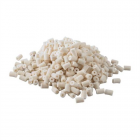dstoenner
Silver $$ Contributor
I do brush when using the Montana extreme and the jb. But I haven’t tried the flitz yet. I see you gave me your directions and i will follow themSoooo, you have NEVER brushed then?
I do brush when using the Montana extreme and the jb. But I haven’t tried the flitz yet. I see you gave me your directions and i will follow themSoooo, you have NEVER brushed then?

After every shooting session a cleaning with Slip 2000. First wet patches then wet bronze brushing. Now let the chemicals do their work , allowing them to soak in the bbl.
Carbon is an element so u cannot dissolve it, u can only loosen/break it free from the surface.
If u clean without brushing, ur bbl. is not getting Clean.
Yes , Slip 2000 is the best to remove carbon. U need to brush it in and let it soak. It is a surfactant and will loosen the carbon . The carbon is best removed as soon as possible. Don’t let it sit n harden.Is this the one you're using? Do you think it is better than Boretech C4?
Isn't that a band of carbon that's in the left half of the picture?A lot of great tips here, Thanks to all.
But looking at your pictures, I don't see carbon, I see the start of fire cracking. Maybe it's just me.
+1 on the VFG pellets with either Iosso or Flitz to clean heavy carbon fouling in a barrel. But do this only when the barrel is heavily fouled and regular methods won't get the carbon out. Iosso and Flitz are abrasive and if done regularly will probably shorten barrel life. Also make sure you clean all of that abrasive stuff out of the barrel when you are finished.
As for the carbon ring where the case neck ends I use an oversized bronze brush soaked with Seafoam (automotive valve cleaner). When used properly this stuff will clean baked on carbon deposits off of engine valves. I attach the brush to a short rigid (non rotating) cleaning rod and lock it down with an extra nut so that it doesn't come loose when rotated back and forth. I then insert it just enough to get to where the ring is (about 3/8 to 1/2 inch after you feel some resistance) I rotate it back and forth and slightly in and out then check with a borescope. This method doesn't use abrasives and is effective if done on a regular basis. If you let the ring build up and harden over a number of shooting sessions then you will have to use an abrasive cleaner like Iosso on the brush instead of the Seafoam. Again I don't recommend the regular use of cleaners containing abrasives especially in the throat area.
Flitz is a metal polish and there are different grades of it. I use flitz to polish the inside of all my sizing dies. By hand I can polish the inside of the die to a mirror finish. It takes a little time but it does work. I use the blue (paste) first and then the green (liquid) flitz. The black you see on the rag after polishing metal is removed material. Granted it is only a very minute ammount of material that is removed but it is enough to smooth the surface and create a shine. The polished dies require much less force and lube when resizing and greatly reduce the chances of sticking a case. I imagine it would have basically the same effect on the inside of a barrel. Iosso seems to be even more abrasive.You could put Flitz on a rag and hold it on a stainless barrel in a lathe spinning at 1000 rpm it it won't hardly even raise a polish... much less remove material.
I don't think Flitz could scratch auto clear coat. Which is like butter in comparison to steel.
Flitz is a metal polish and there are different grades of it. I use flitz to polish the inside of all my sizing dies. By hand I can polish the inside of the die to a mirror finish. It takes a little time but it does work. I use the blue (paste) first and then the green (liquid) flitz. The black you see on the rag after polishing metal is removed material. Granted it is only a very minute ammount of material that is removed but it is enough to smooth the surface and create a shine. The polished dies require much less force and lube when resizing and greatly reduce the chances of sticking a case. I imagine it would have basically the same effect on the inside of a barrel. Iosso seems to be even more abrasive.
Very well! Don't leave it in long. No need really.I've been using CLR on stubborn carbon. Works quite well.
I don't think so. Look at the fine, regular, 90* to the bore lines, they look like snake scales. That's not carbon, that's fire cracking and you couldn't see them if you had a carbon layer still in there. Carbon looks like the surface of a burnt marshmallow, uneven, random, and non-reflective.Isn't that a band of carbon that's in the left half of the picture?

